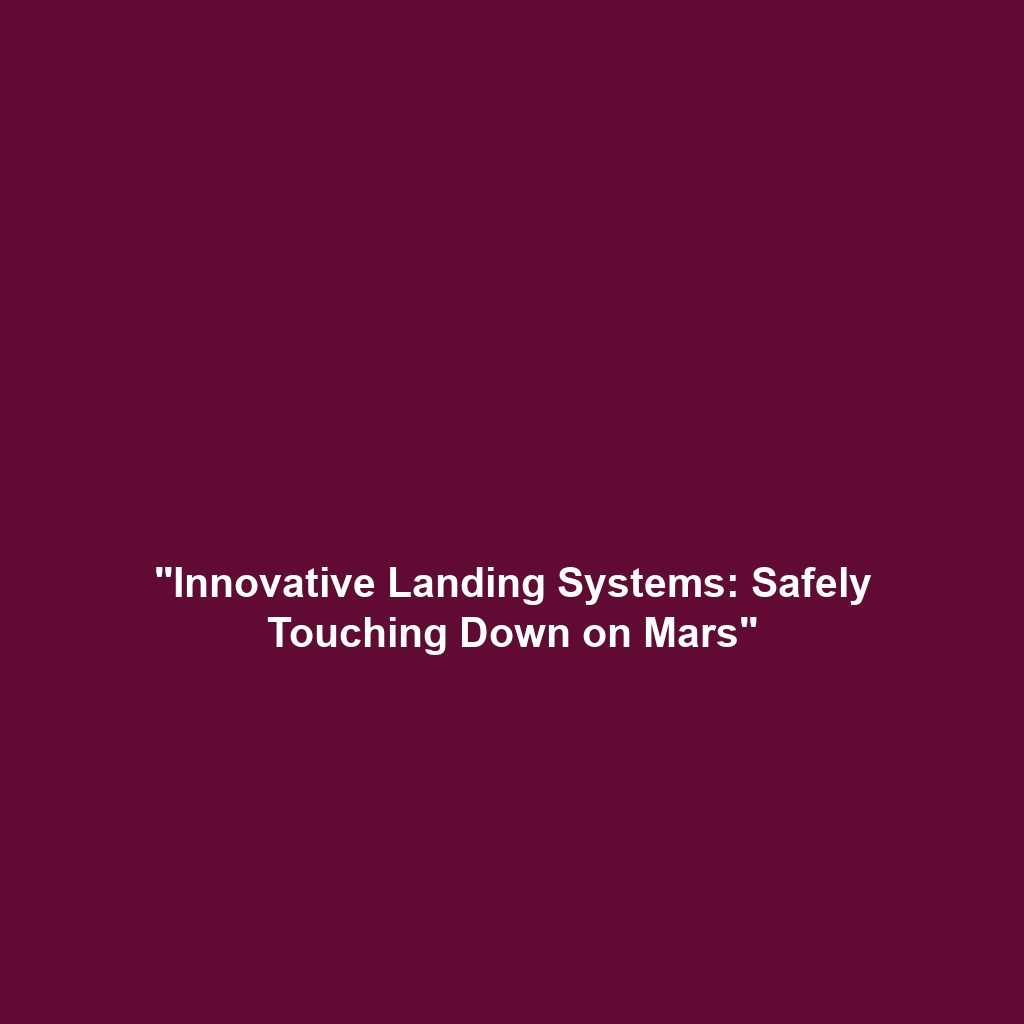Robotic Exploration: The Role of Robots in Preparing Mars for Human Colonization
Introduction
Robotic exploration stands at the forefront of efforts aimed at colonizing Mars. As humans seek to establish a permanent presence on the Red Planet, robotics play a crucial role in the preparatory processes necessary for successful colonization. From autonomous rovers scouting the terrain to sophisticated drones analyzing the Martian atmosphere, the efforts of robotic systems significantly enhance our understanding and capabilities regarding Mars’ harsh environment. This article delves into the significance of robotic exploration in paving the way for human settlers and highlights its implications for the overarching goal of colonizing Mars.
Key Concepts
Understanding the role of robotics in the colonization of Mars involves several key principles:
- Autonomous Navigation: Robots equipped with advanced AI navigate Mars’ rugged terrain without human intervention, enabling extensive exploration.
- Data Collection: Robots gather vital data regarding soil composition, atmospheric conditions, and potential water sources, essential for human survival.
- In-situ Resource Utilization (ISRU): Robotic systems are being designed to extract resources from Martian soil, which can be utilized to support human missions.
These concepts not only illustrate the components of robotic exploration but also position robots as indispensable allies in the journey toward colonizing Mars.
Applications and Real-World Uses
Robots are already proving invaluable in the context of Mars exploration and colonization. Here are some notable applications:
- Rover Missions: NASA’s Perseverance rover and the Mars Curiosity rover are actively conducting geological assessments, providing insights critical for future colonization.
- Teleoperated Systems: Robots can be controlled remotely to perform tasks in hazardous environments, ensuring safety for future human explorers.
- Robotic Arm Technology: Used in landers and rovers, robotic arms can perform intricate tasks such as taking soil samples and conducting experiments.
The integration of these technologies exemplifies how robotic exploration is instrumental in the mission of colonizing Mars.
Current Challenges
Despite the promising advancements in robotic exploration, several challenges remain:
- Communication Delays: The distance between Earth and Mars results in significant time lags in communications, complicating real-time control of robotic systems.
- Technological Limitations: Current robots may not be adaptable enough to handle unforeseen obstacles on Mars’ surface.
- Cost: Robotic missions require significant funding, posing a challenge to the sustainability of ongoing exploration efforts.
Addressing these challenges is crucial for the successful deployment of robots in preparation for human settlers on Mars.
Future Research and Innovations
The future of robotic exploration on Mars holds exciting prospects. Innovations on the horizon include:
- Next-Generation Rovers: Enhanced rovers designed with more autonomous features and advanced sensors for better data collection.
- Collaborative Robots: Systems that work in unison to carry out complex tasks more efficiently.
- Long-Duration Missions: Research aimed at developing robots capable of operating for extended periods without human oversight.
These advancements could revolutionize robotic exploration and significantly impact the trajectory toward colonizing Mars.
Conclusion
Robotic exploration plays a pivotal role in laying the groundwork for human colonization of Mars. By continuously improving our understanding of the Martian environment and addressing the challenges inherent in extraterrestrial missions, robotics will be a cornerstone of humanity’s future on the Red Planet. For those interested in space exploration, staying updated on these developments is essential. For further information, explore topics such as NASA’s Mars missions and the European Space Agency’s efforts.


